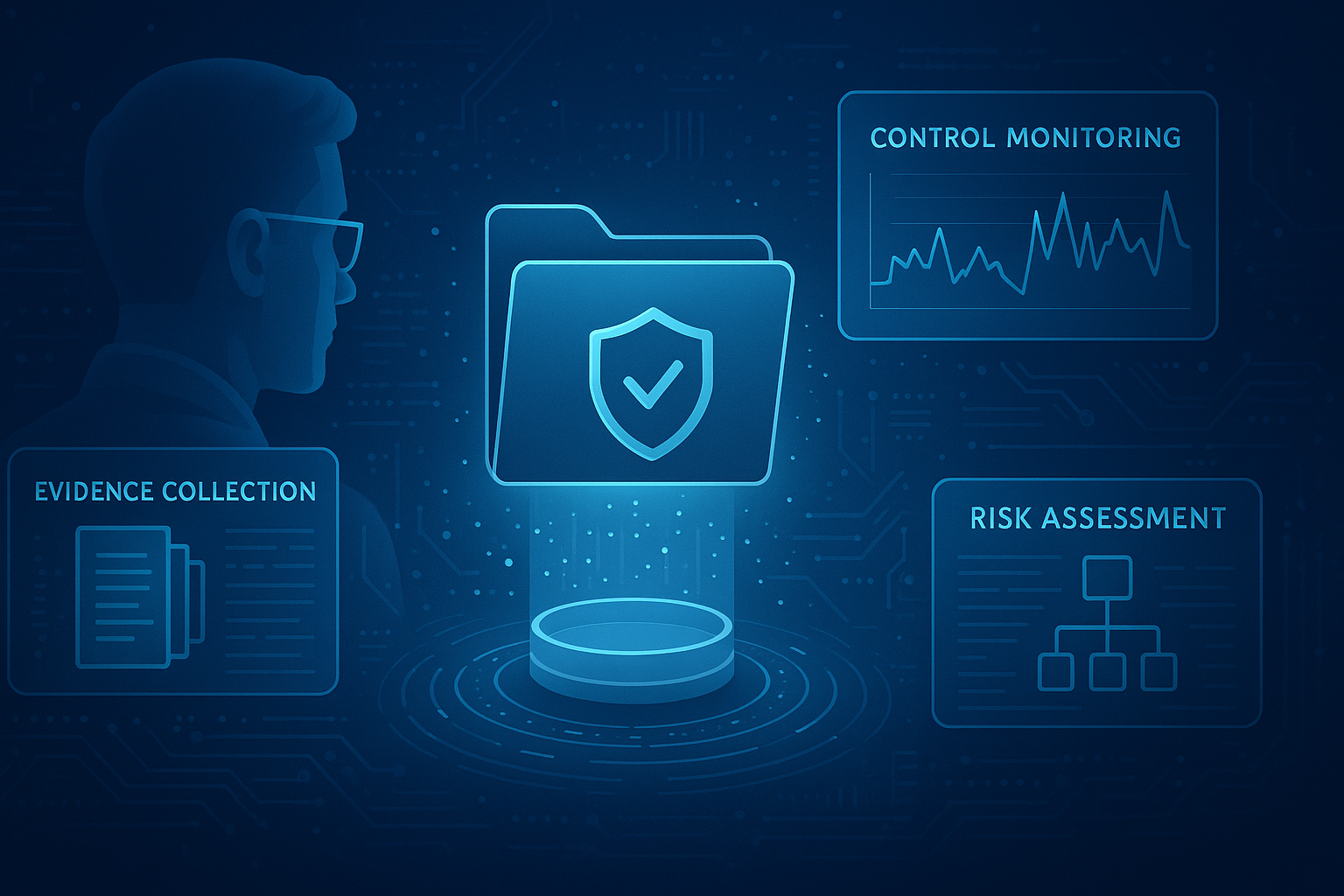In today’s rapidly evolving digital landscape, cybersecurity risks are more prevalent and sophisticated than ever before. Organizations of all sizes are increasingly exposed to many threats, from ransomware attacks and phishing schemes to zero-day exploits and insider threats. As these risks continue to grow in complexity, it becomes crucial for organizations to adopt a proactive approach to cybersecurity—one that prioritizes not just identifying potential threats but also the strategic implementation of risk treatment and mitigation strategies.
Risk treatment in cybersecurity involves carefully assessing potential threats and developing a comprehensive plan to manage, reduce, or eliminate those risks. This process is essential for safeguarding sensitive data, maintaining business continuity, and protecting an organization’s reputation. However, simply acknowledging the risks is not enough. The true challenge lies in effectively strategizing risk mitigation efforts that align with an organization’s unique needs, resources, and threat landscape.
This blog will explore the importance of risk treatment in cybersecurity and the most effective strategies for mitigating modern organizations' myriad threats. From establishing robust access controls to leveraging cutting-edge threat intelligence, we’ll discuss building a resilient cybersecurity posture that responds to current threats and anticipates and prepares for future challenges. By understanding and implementing these strategies, organizations can significantly reduce their exposure to cyber risks and create a safer digital environment for their operations.
What Are the Top Risk Treatment Options?
Risk treatment is a critical component of an organization’s cybersecurity strategy, involving the actions taken to manage identified risks. These actions can range from reducing the likelihood or impact of a risk to entirely eliminating it. The key to effective cyber risk management lies in choosing the appropriate risk treatment option based on the nature of the risk, the organization’s risk tolerance, and the potential impact on operations. Here, we explore the four primary risk treatment options—risk avoidance, risk reduction, risk transfer, and risk acceptance—and discuss when to leverage each.
Risk Avoidance
What It Is: Risk avoidance involves entirely eliminating risk by avoiding the actions that would expose the organization to that risk. This might mean choosing not to engage in certain activities, foregoing certain technologies, or restructuring processes to eliminate exposure to specific threats.
When to Leverage: Risk avoidance is most appropriate when the potential impact of a risk is deemed too high to tolerate, and the associated activity is not critical to the organization’s objectives. For instance, if a particular software application is found to have significant security vulnerabilities and alternative solutions are available, an organization might choose to avoid using that software altogether. However, risk avoidance can sometimes limit operational flexibility, so balancing security with the organization’s overall goals is crucial.
Risk Reduction
What It Is: Risk reduction involves implementing measures to decrease the likelihood or impact of a risk. This can include technical controls, process improvements, and employee training to enhance awareness and reduce human error.
When to Leverage: Risk reduction is the most common approach and is often used when the risk cannot be entirely avoided but can be mitigated to an acceptable level. Organizations should leverage risk reduction strategies when the cost of mitigation is justifiable compared to the potential impact of the risk. For example, an organization might implement email filtering solutions and conduct regular security awareness training to mitigate the risk of phishing attacks. By reducing the likelihood and impact of these attacks, the organization can maintain a strong security posture while continuing its normal operations.
Risk Transfer
What It Is: Risk transfer involves shifting the financial impact of a risk to a third party. This is typically achieved through insurance policies or outsourcing certain services to vendors who assume responsibility for managing specific risks.
When to Leverage: Risk transfer is suitable when an organization wants to protect itself from financial losses associated with certain risks but cannot or does not want to reduce the likelihood of the risk occurring. For example, purchasing cybersecurity insurance can help an organization recover financially from a data breach without bearing the full cost of remediation, legal fees, or regulatory fines. Similarly, outsourcing data storage to a third-party cloud provider might transfer the risk of data loss to the vendor responsible for ensuring data security.
Risk Acceptance
What It Is: Risk acceptance involves acknowledging the existence of a risk and choosing not to take any action to mitigate it, either because the potential impact is minimal or the cost of mitigation outweighs the benefits.
When to Leverage: Risk acceptance is appropriate when the risk is low enough not to threaten the organization’s operations significantly or when mitigation efforts are too costly relative to the potential impact. For example, an organization might accept the risk of minor software bugs in a non-critical application if fixing them would require disproportionate resources. In this scenario, the organization monitors the risk but does not take proactive steps to eliminate it.
How to Choose the Right Cyber Risk Treatment Option for Remediation
Selecting the appropriate risk treatment option requires a thorough understanding of the risk, its potential impact on the organization, and the resources available to address it. Organizations often use a combination of these strategies to manage different risks effectively. For instance, while some high-impact risks might be avoided or reduced, others might be transferred or accepted based on their likelihood and potential consequences. By carefully assessing each risk and aligning treatment options with organizational goals and risk tolerance, businesses can build a robust cybersecurity strategy that effectively protects against a wide range of threats.
An important aspect of deciding how to treat cyber risk is cyber risk quantification (CRQ). By assigning a financial value to identified risks, security teams can effectively assess how to treat each risk based on the severity of the dollar value. CyberStrong offers the easiest implementation of the FAIR framework to translate cyber risk into financial terms.
Learn more about our flexible FAIR-based approach to CRQ with our guide.
Common Cybersecurity Risk Mitigation Strategies
Here, we will examine the most common cybersecurity risks and recommend risk treatment strategies for each. There are several options for risk treatment; this is not an exhaustive list. Certain strategies can be implemented to address several risks, like Multi-Factor Authentication (MFA) and incident response planning.
Ransomware
Ransomware poses several risks, including data loss, operational disruption, financial costs, reputational damage, and potential regulatory penalties. Encrypting critical files can halt business operations, leading to significant downtime, while the costs of paying the ransom, recovering data, and restoring systems can be substantial. Additionally, losing customer trust and possible legal consequences from failing to protect data can negatively impact an organization in the long term.
1. Regular Backups and Backup Security
- Frequent Backups: Regularly back up critical data and ensure that backups are stored in a secure, offline location, disconnected from the primary network, to prevent them from being compromised in an attack.
- Test Backups: Regularly test the restoration process to ensure that backups can be reliably used during a ransomware attack.
2. Patch Management
- Timely Patching: Ensure that all software, applications, and operating systems are regularly updated and patched to close vulnerabilities that ransomware could exploit.
- Vulnerability Management: Conduct regular vulnerability assessments to identify and remediate weaknesses in the network that attackers could exploit.
3. Network Segmentation
- Isolate Critical Assets: Segment the network to limit ransomware spread if a device is infected. Critical systems should be isolated from general user systems.
- Access Controls: Enforce strict access controls and least privilege policies to minimize the exposure of critical assets to ransomware.
4. Incident Response Planning
- Develop a Plan: Have a well-defined incident response plan for ransomware attacks, detailing the steps to contain, eradicate, and recover from an attack.
- Regular Drills: Conduct tabletop exercises and simulations to ensure that the response team is prepared to act swiftly in the event of a ransomware incident.
5. Threat Intelligence and Monitoring
- Real-Time Monitoring: Implement continuous monitoring of network traffic and behavior for signs of ransomware activity.
- Threat Intelligence: Leverage threat intelligence feeds to stay informed about the latest ransomware tactics, techniques, and procedures (TTPs).
Phishing/ Social Engineering
Phishing and social engineering risks include unauthorized access to sensitive information, financial fraud, data breaches, and compromised credentials. These attacks can lead to significant financial losses, operational disruption, identity theft, and erosion of trust. The implications are wide-reaching, potentially damaging an organization’s reputation, exposing it to regulatory penalties, and resulting in the loss of customer and stakeholder confidence. Mitigating the risks associated with phishing and social engineering attacks requires a comprehensive approach that includes technology, process, and people-focused strategies.
1. User Education and Training
- Regular Training Programs: Implement ongoing security awareness training that educates employees about phishing attacks (e.g., email, SMS, voice phishing) and social engineering tactics. Training should cover how to recognize suspicious emails, links, and attachments.
- Phishing Simulations: Conduct regular phishing simulation exercises to test employees' ability to recognize and report phishing attempts. Based on the results, provide feedback and additional training.
- Social Engineering Awareness: Educate employees about social engineering techniques beyond phishing, such as pretexting, baiting, and tailgating.
2. Email Security Solutions
- Advanced Email Filtering: Deploy email security solutions that include spam filters, anti-phishing tools, and malware detection to block suspicious emails before they reach users’ inboxes.
- Link and Attachment Scanning: Implement technology that scans email attachments and links for malicious content. Some solutions can automatically rewrite URLs to point to a secure gateway that checks the destination before allowing access.
3. Multi-Factor Authentication
- Strengthened Authentication: Require MFA for all users, particularly for sensitive systems and data access. Even if credentials are compromised, MFA adds an additional layer of security to prevent unauthorized access.
4. Domain-Based Message Authentication, Reporting & Conformance (DMARC)
- Email Authentication: Implement DMARC, SPF (Sender Policy Framework), and DKIM (DomainKeys Identified Mail) to authenticate the legitimacy of emails sent from your domain, reducing the risk of email spoofing.
5. Least Privilege Access
- Access Controls: Implement the principle of least privilege by ensuring that users have the minimum necessary access to perform their job functions. This limits the potential damage if a phishing or social engineering attack is successful.
Supply Chain Attacks
Supply chain attacks risk introducing vulnerabilities through third-party vendors, leading to compromised systems, data breaches, and unauthorized access to critical infrastructure. The implications include widespread operational disruptions, financial losses, damage to reputation, and potential regulatory penalties. These attacks can also propagate across the supply chain, affecting multiple organizations and their customers and amplifying the overall impact. Mitigating the risks associated with supply chain attacks involves a multi-faceted approach encompassing proactive and reactive measures.
1. Supplier and Vendor Risk Management
-
Vendor Assessment and Due Diligence: Conduct thorough assessments of suppliers and vendors before engaging with them. This includes evaluating their cybersecurity practices, compliance with relevant standards, and overall security posture.
-
Ongoing Monitoring: Regularly monitor and reassess vendors’ security practices. Establish a process for continuously monitoring third-party vendors to detect changes in their risk profile.
-
Third-Party Risk Management (TPRM) Programs: Implement a robust TPRM program that includes risk assessments, contractual requirements for security controls, and continuous monitoring of third-party activities.
2. Supply Chain Mapping and Visibility
-
Inventory of Suppliers: Create and maintain an up-to-date inventory of all suppliers and service providers, including subcontractors. This helps understand the full extent of the supply chain and identify potential weak links.
-
Supply Chain Transparency: Suppliers must provide transparency in their supply chains. This will help identify potential risks further down the chain.
3. Security Requirements in Contracts
-
Contractual Security Clauses: Contracts with suppliers should include specific security requirements, such as adherence to industry standards (e.g., ISO 2700, NIST Cybersecurity Framework (CSF)), regular security audits, and data protection measures.
-
Right to Audit: Include clauses that grant your organization the right to audit or assess the security practices of suppliers and vendors.
4. Secure Software Development and Supply Chain
-
Code Integrity and Verification: Implement processes for verifying software integrity and updates received from third parties. Use code signing and checksums to ensure that software hasn’t been tampered with.
-
Software Bill of Materials (SBOM): Request and maintain an SBOM from software vendors, which lists all components and dependencies used in the software. This helps identify vulnerable components and manage risks.
-
Zero Trust Architecture: Adopt a Zero Trust approach to software supply chains, where no component or software is inherently trusted, and each must be verified before use.
5. Supply Chain Risk Assessment
-
Regular Risk Assessments: Conduct regular cyber risk assessments focused on the supply chain to identify potential vulnerabilities and threats. Use these assessments to inform risk mitigation strategies.
-
Scenario Planning: Engage in scenario planning to anticipate and prepare for various supply chain attacks, such as compromising a critical supplier or disrupting key services.
6. Diversity in the Supply Chain
-
Supplier Diversification: Diversify your supply chain to avoid overreliance on a single supplier. This reduces the impact if one supplier is compromised or disrupted.
Insider Threats
Insider threats pose risks of data theft, sabotage, unauthorized access, and accidental data leaks, often by employees or trusted partners with legitimate access. The implications include financial losses, intellectual property theft, compromised sensitive information, and damage to organizational trust and reputation. Insider threats can be particularly damaging because they are harder to detect and can have long-lasting effects on business operations and security.
1. Access Controls and Least Privilege
- Least Privilege Principle: Limit user access to only the information and systems necessary for their job roles. This minimizes the potential impact if an insider misuses their access.
- Role-Based Access Control (RBAC): Implement RBAC to ensure permissions align with an employee's organizational role. Regularly review and update access controls as roles change.
2. User Activity Monitoring
- User and Entity Behavior Analytics (UEBA): Deploy UEBA tools to monitor user activities and detect abnormal behavior that might indicate an insider threat, such as accessing sensitive data at unusual times or bypassing security controls.
- Data Loss Prevention (DLP): Implement DLP solutions to monitor and control the flow of sensitive information, preventing unauthorized data exfiltration.
3. Comprehensive Employee Onboarding and Offboarding
- Onboarding Procedures: Ensure new employees are thoroughly vetted and educated about the organization's security policies, including acceptable systems and data use.
- Offboarding Procedures: When an employee leaves the organization, immediately revoke access to systems, data, and physical premises. Conduct an audit of their activities before departure to ensure no sensitive data was taken.
4. Security Awareness Training
- Regular Training Programs: Provide regular training that educates employees about the risks of insider threats, including how to recognize and report suspicious activities.
- Encourage a Security-Conscious Culture: Promote a culture of security awareness where employees understand the importance of protecting sensitive information and are encouraged to report potential security incidents without fear of reprisal.
5. Legal and Disciplinary Framework
- Clear Policies and Consequences: Establish policies regarding acceptable use of company resources and data and ensure employees understand the consequences of violating these policies.
- Enforce Legal Agreements: Use non-disclosure agreements (NDAs), non-compete clauses, and other legal tools to protect sensitive information from being misused by insiders.
Develop Risk-Informed Mitigation Strategies
Building a resilient cybersecurity posture requires a proactive, adaptive, and multi-layered approach that addresses current threats and future challenges. Organizations should begin by adopting a risk-first approach, regularly assessing their unique threat landscape, and prioritizing mitigation efforts based on potential impact. This can be enhanced by leveraging risk assessment models like NIST 800-30 and FAIR.
Leveraging advanced threat intelligence and continuous control monitoring through tools like Continuous Control Automation™ (CCA) and SIEMs enables organizations to detect and respond to threats in real-time. Enhancing incident response capabilities with detailed plans, regular drills, and post-incident reviews ensures quick and effective management of security incidents.
Collaboration with industry peers and participation in information-sharing initiatives enhance collective defense efforts while leveraging emerging technologies like AI, ML, and blockchain can provide additional layers of security. Finally, developing a long-term cybersecurity strategy, with board-level involvement and adequate resource allocation, ensures that the organization remains resilient and prepared for future challenges.





.png)
.png)
.png)
%201.png)
.png)




